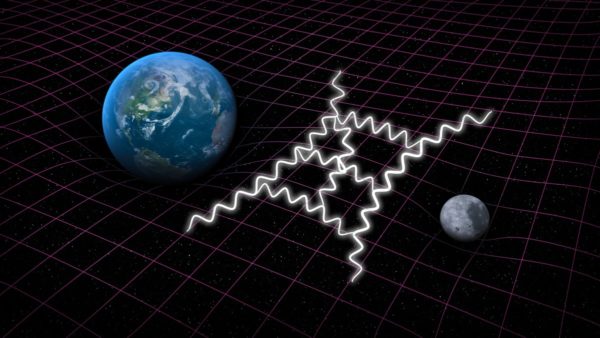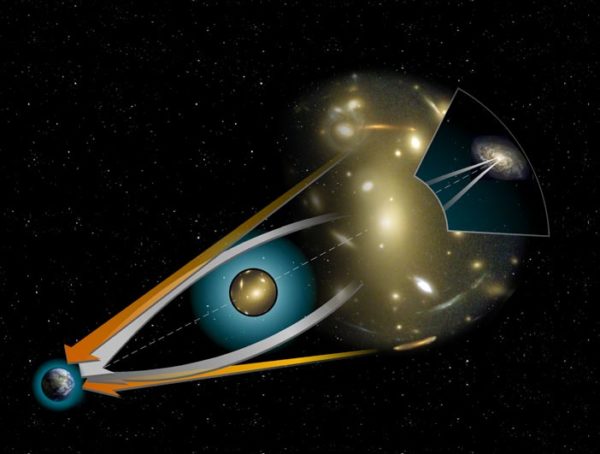"'Space-time' - that hideous hybrid whose very hyphen looks phoney." -Vladimir Nabokov
Sure, you know what space and time are. If you heard of Einstein and relativity, you might know that they’re not absolute quantities, but that how you experience distances and the ticking of clocks is dependent on your motion through the Universe. But did you also know that the addition of masses and gravitation to the theory didn’t just result in general relativity, but changed the way we viewed the Universe completely?
 Quantum field theory calculations are normally done in flat space, but general relativity goes beyond that to include curved space. QFT calculations are far more complex there. Image credit: SLAC National Accelerator Laboratory.
Quantum field theory calculations are normally done in flat space, but general relativity goes beyond that to include curved space. QFT calculations are far more complex there. Image credit: SLAC National Accelerator Laboratory.
If you told me the positions, momenta and all the other properties of all the matter and energy in the Universe, I could tell you everything thanks to general relativity. I could tell you what the Universe would look like and what its behavior would be at any point in time: past, present or future. I could tell you the birth and fate of the Universe, and I could do it with no uncertainty at all. General relativity might be incredibly complex, but it’s the most powerful classical theory of all.
 An example/illustration of gravitational lensing, and the bending of starlight due to mass. Image credit: NASA / STScI, via http://hubblesite.org/newscenter/archive/releases/2000/07/image/c/.
An example/illustration of gravitational lensing, and the bending of starlight due to mass. Image credit: NASA / STScI, via http://hubblesite.org/newscenter/archive/releases/2000/07/image/c/.

Polite cough: the article says "curved space" when it ought to say curved spacetime. The space around the Earth is not curved, instead it's inhomogeneous, and when you plot the inhomogeneity, your plot is curved.
And the earth isn't an oblate spheroid, but is defined by a 12-axis irrelgular shape of a geoid.
Or we can say "round" and admit that everyone is sane and normal.